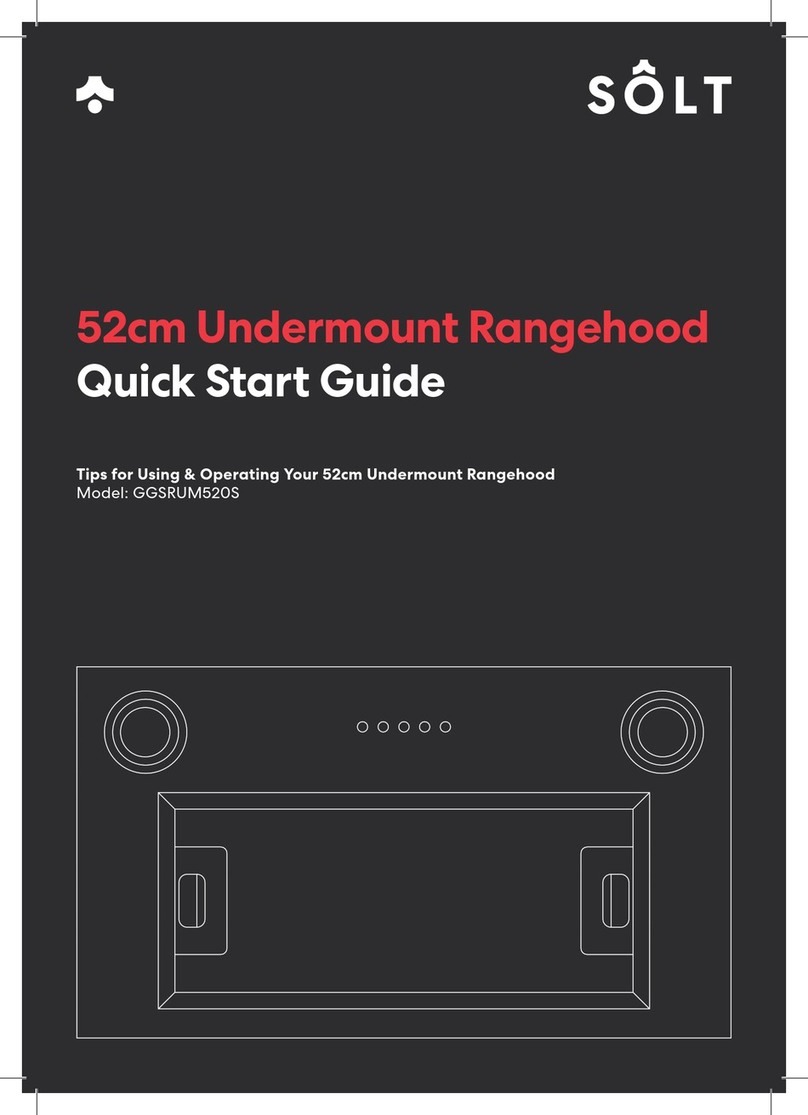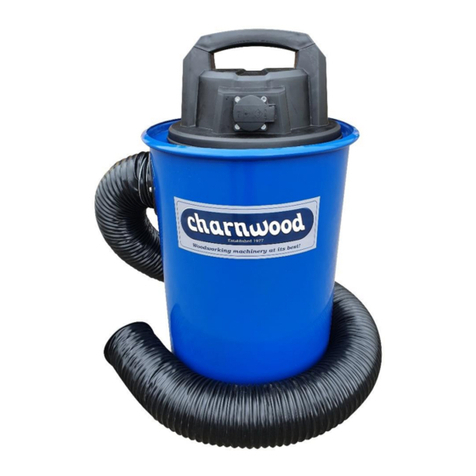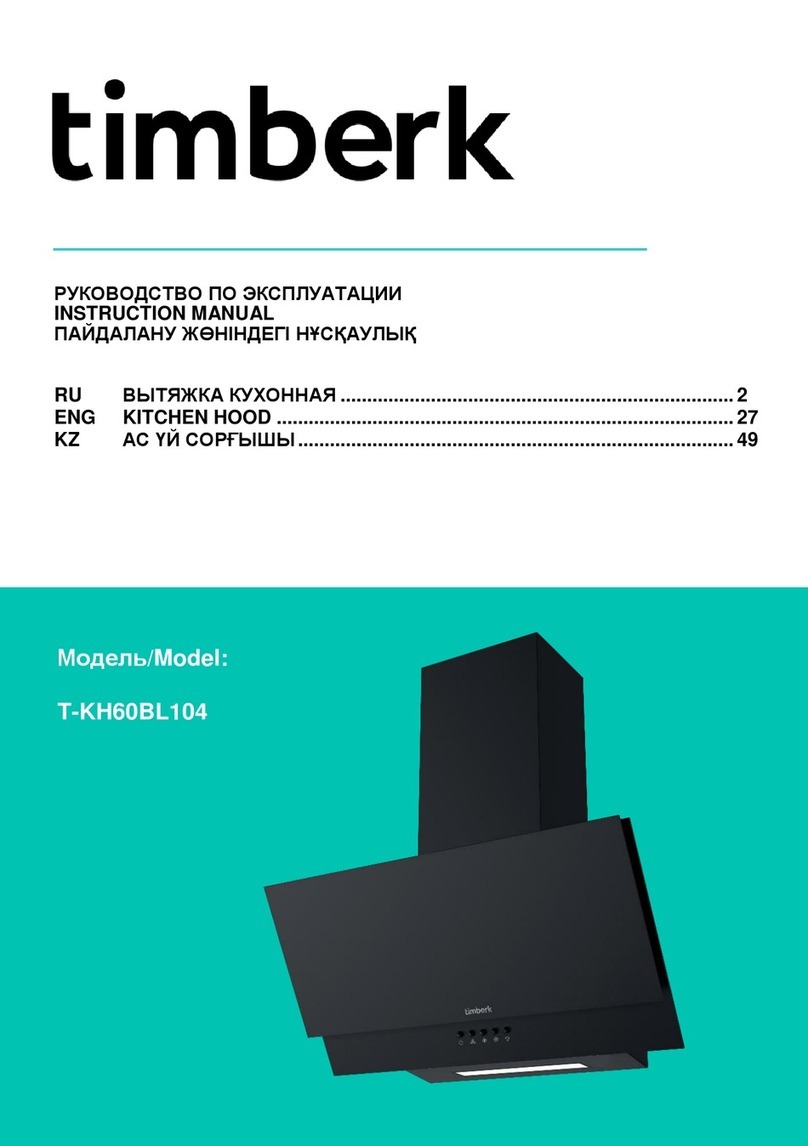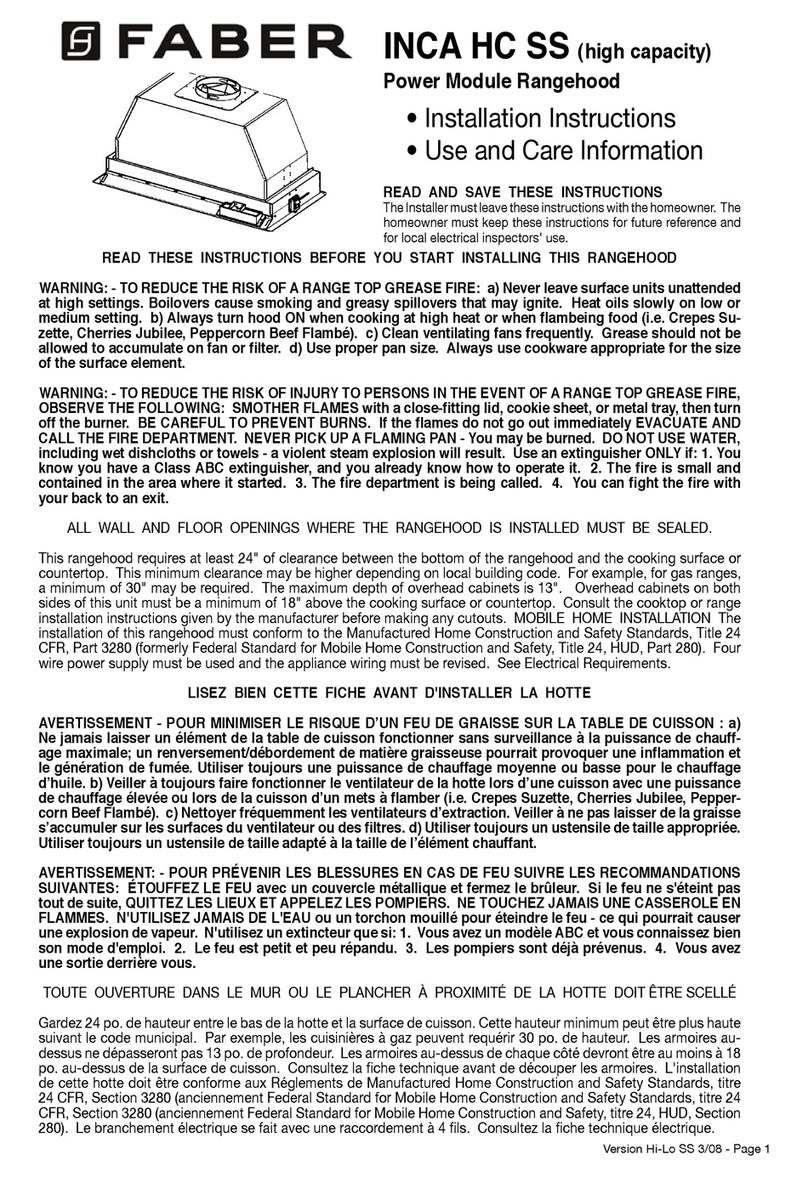ERV Systems PRO-C-1000 Operating instructions

Installation & Owners Manual
PRO-C Series
Energy Recovery Ventilator
For Carrier® HJ, TM and TF Rooftops
(Sizes 3 to 12.5 ton)
High Performance Ventilation Equipment
PRO-C-1000
PRO-C-2400

Pro-C Series
Table of Contents
©2001-2007 ERV Systems®. All rights reserved.
The information in this technical guide is furnished for informational use only, is subject to change without notice, and should
not be construed as a commitment by ERV Systems. ERV Systems assumes no responsibility for any errors that may appear in
this technical guide.
No part of this publication may be reproduced, stored in a retrieval system or transmitted, in any form or by any means, electronic,
mechanical, recording, or otherwise, without the prior written permission of ERV Systems.
ERV Systems and the ERV System’s logo are registered trademarks.
i
PRO-C Series.................................................................................................................................................................................... 1
How it Works.................................................................................................................................................................................... 1
Model Description ........................................................................................................................................................................... 2
Definitions......................................................................................................................................................................................... 2
Receiving & Inspection ................................................................................................................................................................... 3
Overall Dimensions......................................................................................................................................................................... 3
Storage ............................................................................................................................................................................................... 3
Lifting Technique ............................................................................................................................................................................. 3
Installation......................................................................................................................................................................................... 4
Linkup................................................................................................................................................................................................ 4
Support .............................................................................................................................................................................................. 7
Supply/Exhaust Airflow Dampers................................................................................................................................................ 8
Controls............................................................................................................................................................................................. 9
3Ø Circuit Diagram, PRO-C-1000.............................................................................................................................................. 11
3Ø Circuit Diagram, PRO-C-2400.............................................................................................................................................. 12
1Ø Circuit Diagram, PRO-C-1000 - PRO-C-2400...................................................................................................................13
3Ø Electric Preheat Frost Protection Circuit Diagram ...........................................................................................................14
1Ø Electric Preheat Frost Protection Circuit Diagram ...........................................................................................................14
Segregated Exhaust Adapter Dimensions..................................................................................................................................15
Wheel Cassette................................................................................................................................................................................16
Electric Preheat Layout.................................................................................................................................................................17
Unit Arrangement & Dimensions...............................................................................................................................................18
Maintenance....................................................................................................................................................................................19
Belts..................................................................................................................................................................................................20
Installation.......................................................................................................................................................................................21
Alternative Installation Method................................................................................................................................................... 21
Retensioning ...................................................................................................................................................................................21
Contact Information .....................................................................................................................................................................22

Pro-C Series
1
Outdoor Air
95°F, 110 gr/lb (C)
5°F, 4 gr/lb (H)
Supply Air
80°F, 76 gr/lb (C)
54°F, 25 gr/lb (H)
Return Air
75°F, 65 gr/lb (C)
70°F, 32 gr/lb (H)
Exhaust Air
90°F, 99 gr/lb (C)
21°F, 9 gr/lb (H)
The PRO-C Series
The PRO-C Series Energy Recovery Ventilator is an outdoor
air preconditioner specifically designed to reduce the energy
required to cool or heat the outdoor air by as much as 80
percent. The PRO-C also allows the Carrier® 3 through 12-
1/2 ton HJ, TM and TF roof top air-conditioner systems to
effectively and economically accommodate the three-to-four
fold increase in outdoor air quantities, which is recommended
by the ASHRAE Standard 62, Ventilation for Acceptable
Indoor Air Quality. This unique capability allows both
new and existing buildings to benefit from healthy indoor
environments.
A PRO-C is designed to improve humidity control when
combined with the Carrier rooftop equipment. Because
the unit preconditions the incoming air to the packaged
equipment, the required refrigeration capacity can be reduced
by as much as 50 percent. Thus, the costs of the PRO-C
and its installation are typically offset by the reduced size of
the Carrier system. Generally, any first cost premium is paid
back within the first year of operation.
Figure 1. An inside view of the PRO-C ventilator with typical
operating conditions during the cooling (C) and heating (H)
season respectively.
How It Works
The PRO-C Series is a packaged system which includes
supply and exhaust air fans, outdoor and return air filter
and a TEC total energy recovery wheel. The TEC wheel
recovers both sensible (temperature) and latent (moisture)
energy; it cools and dehumidifies the outdoor air during the
cooling season, while heating and humidifying the outdoor
air in the heating season.
The TEC wheel utilizes a fluted aluminum substrate
which is uniformly coated with a fast-acting, adsorbent
desiccant. As the transfer media slowly rotates between the
outdoor and exhaust airstreams, the higher temperature air
gives up its sensible energy to the aluminum. This energy is
then given up to the cooler airstream during the second half
of the revolution. (See Figure 1.)
Just as the temperature is captured and released, so is the
moisture. TEC’s desiccant coating has an enormous internal
surface area and a strong attraction for water vapor. Since the
opposing airstreams have different temperature and moisture
contents, their vapor pressures differ. This difference causes
the transfer of latent energy.

Pro-C Series
2
Model Description
On the front of the PRO-C is an identification label (Figure
2). The specifications on the label correspond to the
actual unit. The model number PROC-1000 refers to the
nominal air volume (in cfm) that the PRO-C unit is capable
of supplying.
Definitions
Outdoor air – The fresh outside air that is being drawn
in to the energy recovery wheel. Once it passes through
the wheel it becomes the supply air.
Return air – Air from the indoor space that is pulled
through the energy recovery wheel. Once it passes
through the wheel it is referred to as exhaust air.
Rotor – The media-filled wheel that rotates. It
transfers heat energy and water vapor from one ducted
airstream to the other. Often, the rotor will be referred
to as a wheel.
Seal – The soft material that closely surrounds the
rotor to limit the amount of bypass air around the
rotor.
Supply air – Air provided to the indoor space.
Outside air that passes through the energy recovery
wheel becomes supply air.
Unit – Used frequently throughout this manual to
mean the TECEnergy Recovery Wheel and attendant
components such as cabinets, motors, fans and other
parts that work together to make an effective energy
recovery product.
Wheel – Refers to the rotating wheel containing the
coated media. The stationary framework supporting
the wheel is the wheel cassette.
5
14
67 10
1 3 42
8
911
13
12
Adsorption – The physical bonding of water vapor
on the surface of the desiccant.
Cassette – The framework supporting the wheel. (See
also Wheel.)
Desiccant – A naturally occurring or man-made
material with a high affinity for water vapor. SEMCO
uses a total energy composite desiccant material which
recovers equal sensible and latent energy.
Enthalpy wheel – A common term used to describe
all rotating, wheel-shaped heat transfer devices that
exchange sensible (temperature) and latent (water
vapor) energy from one airstream to another. The
word, enthalpy, means heat content or total heat. The
term, enthalpy exchanger, may also be used.
Exhaust air – The air from indoors that passed
through the energy recovery wheel and is being ducted
outdoors.
Heat wheel – This generally describes all rotating
devices which transfer only sensible energy.
Media – The corrugated material inside the wheel.
1
2
3
4
5
6
7
9
10
11
12
13
14
Figure 3. Typical PRO-C unit with components highlighted
per definitions above.
Figure 2. Typical PRO-C nameplate with electrical data.
8

Pro-C Series
3
Receiving & Inspection
Upon delivery, confirm that the quantity and model(s)
received matches the Bill of Lading. If there is any
discrepancy, immediately notify ERV Systems.
Inspect the skidded PRO-C(s) for signs of damage. If
damage is suspected, sign the Bill of Lading “damaged.” If
no visible damage is apparent, the unit should be properly
lifted and stored until installation.
While skidded, the PRO-C can be lifted by a forklift
using the skid. Once removed from the skid, lifting must
only be performed with spreader bars, cable and hooks. Do
not attempt to lift the PRO-C by grasping the hoods.
Storage
If the PRO-C is to be stored for any time before installation,
it must be protected from the weather. Indoor storage is
recommended. The unit has openings provided for ducting.
These openings make the internal equipment (motors,
belts, fans and insulation) vulnerable to inclement weather
conditions (prior to installation) and can cause standing
water to accumulate inside the enclosure. This is to be
absolutely avoided.
H
L
W
Table 1. Weights & Dimensions
Model L
(in)
H
(in)
W
(in)
Net
Weight*
(lbs)
PRO-C-1000 47.86 30.19 31.38 350
PRO-C-2400 54.75 38.81 40.38 475
*The package weighs approximately 100 lbs. more than
the net weight.
Overall Dimensions
Lifting Technique
When rigging the PRO-C, spreader bars must be used.
Padding must be inserted between the straps and the unit
to avoid scratching the paint. Lifting holes are provided at
four points located on the base perimeter of the PRO-C
unit. The weight shown in Table 1 may be used as maximum
weight for rigging.
padding
padding
padding
NOTE:
Prior to starting unit:
1. Open access door
2. Remove loose parts shipped inside.
Figure 4. Correct lifting technique using spreader bars.

Pro-C Series
4
Installation
Installation of the PRO-C unit is a relatively simple
procedure, but should be undertaken in a methodical fashion,
following the directions outlined in this manual.
The installation location should be chosen to provide
easy, convenient access. As with all mechanical equipment,
routine maintenance and inspection is necessary. Avoid
locations that are near or downwind of smoke, fumes or
exhaust outlets of other equipment. The front access panel
should have clearance space equal to the depth of the unit
to allow for service.
Once the installation location is determined, the PRO-
C should be un-skidded and closely examined for exterior
damage. Any defects or problems should be reported to
ERV Systems immediately.
After the exterior of the PRO-C is checked for obvious
damage, the front panel can be removed and the interior
checked. Inspect the interior of the unit for any damage.
The ERV Systems energy recovery wheel is mounted
vertically inside the PRO-C unit. Verify that the wheel can be
spun by hand, clockwise from the left. The motor and belt
arrangement that turn the wheel are visible next to the wheel
at the access panel opening. The motor wires running to
the control panel are attached by a quick release disconnect.
The quick disconnect must be separated before sliding out
the wheel cassette. The wheel cassette need not be moved
for installation or hookup, but it can be pulled out for easy
maintenance and inspection purposes as instructed on page
19.
The unit identification tag is located on the electrical
cabinet. It states the electrical requirements for the unit. The
main power connection to the unit should be made on the
control panel inside of the electrical cabinet (see the electrical
diagrams on pages 11-13). Make sure the power provided
to the installation site matches that required by the unit.
Note and verify that the voltage/phase/capacity needed and
provided are the same. Actual line voltage needs to be within
+/- 5% of the rated voltage for the unit to operate prop-
erly.
If the unit has been ordered with electric preheat, it
is shipped installed and the unit ID tag is located on the
heater. The main power connection to the unit is made at
the electric coil instead of the unit control panel (see the
electrical diagram on page 14).
Follow the linkup instructions provided on page 6.
Verify that the PRO-C is supported as instructed on page
5, if required.
After installation, attach the outdoor air hood and the
exhaust hood using the alignment holes on the unit. Note
that if the alignment holes are not used the unit may not
function properly. Units with an electric preheat require that
the outdoor air hood be centered on the heater opening.
Optional controls can be set and adjusted (see instructions
on pages 9 & 10). The outdoor and exhaust dampers can
be adjusted after the unit has been test run, as shown on
page 8.
All materials required for installing the unit are provided:
Materials Supplied:
• Gasket • PRO-C Support Angle
• Caulk • Return Air Scoop
• #12 TEK screws • Supply Air & Exhaust Air Hoods
PRO-C-1000 Installation Instructions:
Linkup
1. Remove protective plastic from the Supply Air and
Return Air openings.
2. Within the Supply Air opening, remove all items
(manuals & parts).
3. Remove the screws from the roof of the Carrier unit,
lift, and block.
4. Remove the end panel of the Carrier unit.

Pro-C Series
5
5. Install the PRO-C support angle to the base of the
carrier unit. (9 screws)
6. Install the return air scoop to the return air opening of
the PRO-C unit.
7. Install the gasket to the left, right, and bottom facing
edges of the PRO-C unit.
8. Bring the units together and set into place.
10. If included, place the pedestal support at end of the
PRO-C unit, opposite the Carrier Unit. The pedestal
support is adjustable from 9” to 14”.
11. Caulk the left and right vertical seams on the Carrier
unit as shown below.
12. Install the Outside Air and Exhaust Air hoods on the
PRO-C unit.
9. Lower the roof of the carrier unit so that it covers the
top edge of the PRO-C unit. Install a minimum 3 #12
Tek screws across the top flange of the Carrier unit.
3 Tek
screws
NOTE: Rooftop unit filter access will be through the
return air access panel (See Figure 5a.)

Pro-C Series
6
PRO-C-2400 Installation Instructions:
4. Remove the end panel of the Carrier unit.
3. Remove the screws from the roof of the Carrier unit.
Lift roof and block.
2. Remove protective plastic from the Supply Air and
Return Air openings.
1. Open the fan door of the PRO-C unit and remove all
items (manuals & parts).
5. Install the PRO-C support angle to the base of the
carrier unit.
6. Install the right side angle trim to the Carrier unit and
secure with screws.
7. Install the bottom angle trim to the PRO-C unit.
8. Install the return air scoop to the return air opening of
the PRO-C unit.

Pro-C Series
7
12. Secure the right side angle trim to the PRO-C unit
with the screws provided.
10. Bring the units together and set into place.
14. If included, place the pedestal support at end of the
PRO-C unit, opposite the Carrier Unit. The pedestal
support is adjustable from 9” to 14”.
15. Install the Outside Air and Exhaust Air hoods on the
PRO-C unit.
11. Install the left side angle trim to the Carrier unit and
PRO-C unit and secure with screws.
13. Lower the roof of the carrier unit so that it covers the
top edge of the PRO-C unit. Secure with screws and
caulk.
NOTE: Rooftop unit filter access will be through the
return air access panel (See Figure 5a.)
9. Install the gasket to the left and right facing edges of
the Carrier unit.
The PRO-C unit is designed to support off the end of the
Carrier unit. A required optional pedestal support is avail-
able from ERV Systems for the PRO-C series. The PRO-C
series should not be installed without the pedestal support.
(See Figure 5a.) This pedestal adjusts in height from 9 to
14 inches.
Support
To install the pedestal support, position the PRO-C
on the Carrier unit. Locate the pedestal under the front of
the PRO-C unit as shown. Lock the pedestal to the correct
height with #12 TEK screws. Fasten the top of the pedestal
to the base of the PRO-C with a minimum of 4 #12 TEK
screws. (See Figure 5b.)
Figure 5a. Installation of the pedestal support is on the front
side of the PRO-C unit.
Figure 5b. Side view of the finished installation is shown.
2ETURN
!IR
!CCESS
0ANEL
#!22)%25.)4
02/#3%2)%3

Pro-C Series
8
Supply/Exhaust Airflow Dampers
All PRO-C units have airflow dampers on the outdoor air
intake and exhaust air outlet that are field adjustable.
To adjust the outside airflow damper, turn the unit off and
open the access panel. Locate the outside airflow damper
actuator inside the unit on the right side. Loosen the two
end stops and with a No. 2 Phillips head screwdriver.
Move the stops to the desired positions and retighten the
screws. To test the correct position of the stops, while
depressing the release button on the actuator, move the
damper to the fully open and closed position. Readjust the
stops as necessary. The actuator will automatically open the
damper to the set position whenever the unit is running and
will close the damper to the set position when the remote
unit start/stop (by others) is off. Note, the actuator needs
power to close, therefore it is not recommended that the
unit be turned off by disconnecting the power to the unit.
This may leave the actuator in an open position, which may
not be desirable.
To adjust the exhaust airflow damper, turn the unit off
and remove the nut/bolt stops on both sides of exhaust
hood. Reposition the nut/bolt stops in the desired adjusting
holes and retighten. Be sure to use matching adjusting hole
on both sides of the exhaust hood. Readjust the stops as
necessary to obtain the desired airflow. The exhaust airflow
damper will automatically open to the set position when the
exhaust fan is on, and close when the exhaust fan is off.
2ELEASE"UTTON
%ND3TOP
%ND3TOP
PRO-C Unit Adjusting Holes
Nut/Bolt Stop
Exhaust Damper
Exhaust Hood
Figure 6. Location of the outside air damper and actuator.
Figure 7. Diagram of exhaust hood damper.

Pro-C Series
9
Controls
Basic Package
The basic PRO-C unit ships with no controls. The standard
wiring package provides connections for the starting/
stopping of the complete unit, supply fan and the energy
wheel. The connections are shipped with factory jumpers
installed. Remote control of any of these options can
be achieved by removing the correct factory jumper and
installing a contact in its place. The contact should be capable
of handling 24V power at 2 amps (PRO-C-1000) or 3.5 amps
(PRO-C-2400). (See appropriate 1Ø or 3Ø circuit diagram
on pages 11 through 13). It is strongly recommended that
a remote unit start/stop contactor (supplied by others) be
used to turn the unit on and off. This allows the outdoor
air damper to fully close when the unit is off.
Optional Electric Preheat Frost Control
For applications where the outdoor conditions do not exceed
-10°F and where the indoor design conditions do not exceed
70°F and 25 percent RH, the energy wheel can operate at full
capacity and will not frost. For colder design conditions or
buildings with higher humidity levels, frosting of the wheel
can be prevented by providing a modest amount of preheat
to the outdoor air. The amount of preheat required is small
and is not intended to raise the outdoor air temperature
above the freezing point. It is only necessary to keep the
exhaust air temperature above the dew point. This prevents
condensation on the wheel so that all the moisture transfer
occurs in the vapor phase.
The preheat control option includes a finned tube
electric coil mounted on the outdoor air intake of the unit,
an SCR controller and a temperature sensor mounted in the
outdoor air plenum. The temperature for the controller is set
to the minimum temperature of the outdoor air required to
prevent condensation at the design indoor temperature and
humidity. This is done by plotting a line on the psychrometric
chart from the indoor design condition down to the coldest
temperature that does not cause the operating line to
intersect the saturation curve on the chart. As stated above,
for inside conditions of 70°F and 25 percent RH, this
temperature is about -10°F.
605040 80
40
30
20
Dry Bulb Temperature (°F)
60
3020
100
10
50
Exhaust Air EA2
-5 20.2
-10
1.5
Humidity Ratio
(grains of moisture per pound of dry air)
38
27
70
Return Air RA1
Return Air RA2
Outside Air OA2
Outside
Air OA1
Example 1:
The return air condition is 70°F and
25% relative humidity (27gr/lb).
Line RA 1-OA: No frosting occurs at full recovery
Example 2:
The return air condition is 70°F and
35% relative humidity (38 gr/lb).
Line RA -OA: Frosting occurs at full
recovery at exhaust air condition EA .
Therefore, frost preheat is required
to bring the outside air to condition OA .
2
2
2
Figure 8. SMX70 controller as installed on the electric pan-
el.

Pro-C Series
10
Optional Stop/Jog Economizer And Wheel
Frost Protection (SMX70 Controller)
The stop/jog economizer option is used during moderate
outdoor air temperatures to stop the recovery wheel. The jog
function is included to allow the wheel to rotate periodically
to self-clean.
When the outdoor temperature is between 55°F (the
cooling coil supply air temperature) and 75°F (the space
return air temperature) the wheel will raise the outdoor air
temperature which will add slightly to the space sensible load.
At the same time, if the outdoor humidity level is higher than
the space humidity level, the recovery wheel will dehumidify
the fresh air slightly reducing the space latent load. If the
local climate is such that these intermediate temperature days
occur mostly at moderate humidity conditions, the stop/jog
economizer can eliminate the heating of the outdoor air and
provide some free cooling to the space.
The stop/jog economizer consists of a temperature
sensor and a circuit board with dip switch selection of
temperature and stop/jog times. When the outdoor
temperature is in the range between the two setpoints, the
timer relay operates the wheel for approximately 30 seconds
in every 30 minutes.
The SMX70 board also has the ability to put the wheel
in stop/jog mode when the outdoor air temperature drops
below a preset value. This is a lower cost option than the
electric preheat. It also has the disadvantage in supplying
untreated outdoor air into the ventilation system whenever
the stop/jog activates.
Optional Rotation Detector Sensor
The SMX70 stop/jog economizer board can be supplied
with a motion detector to monitor the rotation of the energy
recovery wheel. The sensor is a hall effect device that senses
the passage of a small magnet on the perimeter of the ro-
tor. When the sensor fails to register any wheel rotation - it
requires a signal every 20 seconds or 10 minutes depending
on the mode of operation - it energizes the alarm terminal
(24 VAC, .3 amp max) of the SMX70 board. This can be
used to operate a relay (to be supplied by others) for remote
indication of the alarm. The sensor will not create a false
alarm when the SMX70 controller is in stop/jog mode.
The alarm resets itself once the wheel begins to turn
or the system is shut off and restarted.
Please note that the triac output for the alarm signal
requires a load, such as a contactor coil, to operate. This
output may not register on a digital multimeter without the
load, or may cause a lamp with no limiting resistor to light
dimly.
Thermostat Frost Protection
A lower cost solution to frost protection is to use a thermostat
to turn the entire ventilation unit off during periods when
the air is below the calculated frosting temperature. This
should only be used in non-critical ventilation applications
as no outdoor air will be supplied when the unit is switched
off by the thermostat.
Figure 9. SMX70 controller as installed on the electric
panel.
Figure 10. SMX70 Controller settings.
12345678
UP
DOWN
FROST SETPOINTS (DEG.F)
DDDDDDDD DISABLED
UDDDDDDD -14
DUDDDDDD -13
UUDDDDDD -12
DDUDDDDD -11
UDUDDDDD -10
DUUDDDDD - 9
UUUDDDDD - 8
DDDUDDDD - 7
STOP/JOG TEMPERATURE SETPOINTS (DEG. F)
OFF/ON TIME*
ON TIME OFF TIME
(SECONDS) (MINUTES)
5 DDDD DDDD 0.1 (TEST)
10 UDDD UDDD 10
15 DUDD DUDD 20
20 UUDD UUDD 30
25 DDUD DDUD 40
30 UDUD UDUD 50
35 DUUD DUUD 60
40 UUUD UUUD 70
45 DDDU DDDU 80
50 UDDU UDDU 90
55 DUDU DUDU 100
60 UUDU UUDU 110
65 DDUU DDUU 120
70 UDUU UDUU 130
75 DUUU DUUU 140
80 UUUU UUUU 150
*ON TIME IS SWITCH POSITION 1,2,3,4
*OFF TIME IS SWITCH POSITION 5,6,7,8
DDDDDDDD 40
UDDDDDDD 41
DUDDDDDD 42
UUDDDDDD 43
DDUDDDDD 44
UDUDDDDD 45
DUUDDDDD 46
UUUDDDDD 47
DDDUDDDD 48
UDDUDDDD 49
DUDUDDDD 50
UUDUDDDD 51
DDUUDDDD 52
UDUUDDDD 53
DUUUDDDD 54
UUUUDDDD 55
DDDDUDDD 56
UDDDUDDD 57
DUDDUDDD 58
UUDDUDDD 59
DDUDUDDD 60
UDUDUDDD 61
DUUDUDDD 62
UUUDUDDD 63
DDDUUDDD 64
UDDUUDDD 65
DUDUUDDD 66
UUDUUDDD 67
DDUUUDDD 68
UDUUUDDD 69
DUUUUDDD 70
UUUUUDDD 71
DDDDDUDD 72
UDDDDUDD 73
DUDDDUDD 74
UUDDDUDD 75
DDUDDUDD 76
UDUDDUDD 77
DUUDDUDD 78
UUUDDUDD 79
DDDUDUDD 80
UDDUDDDD - 6
DUDUDDDD - 5
UUDUDDDD - 4
DDUUDDDD - 3
UDUUDDDD - 2
DUUUDDDD - 1
UUUUDDDD 0
DDDDUDDD 1
UDDDUDDD 2
DUDDUDDD 3
UUDDUDDD 4
DDUDUDDD 5
UDUDUDDD 6
DUUDUDDD 7
UUUDUDDD 8
DDDUUDDD 9
UDDUUDDD 10
SMX70 CONTROLLER
TIME LOW HIGH FROST
LOW
HIGH
Wheel Only Frost Protection
Typically Disabled
Upper Stop/Jog Economizer
Setpoint (Typically 75°F)
Lower Stop/Jog Economizer
Setpoint (Typically 55°F)
Stop/Jog Times
(Typically 30s on,
30 minutes off.)

Pro-C Series
11
3Ø Circuit Diagram, PRO-C-1000
Outdoor Air Damper Actuator:
Belimo
Optional Stop/Jog Controller:
310-1875 Assembly (observe polarity)
Motion Detector Sensor
Optional
Model SMX70
Aux. Rotation Alarm (not used)
310-1865 Assembly
(See Note 3)
Thermistor Sensor
4
2
5
2
4
1
Line Power
480/240-208/3/60
H1
H3
Disconnect (by others)
*See Note 2
H3
H2
Exhaust Fan
Motor
2CR
Supply Fan
Motor
1CR
USE COPPER
CONDUCTORS
ONLY
2CR
1CR
contactor (by others), 24VAC, 0.3 amps max.
disconnect at the preheater, (See specifications
and circuit diagram on electric preheater for
are shipped with jumper installed.
Remote unit start/stop (by others) may be
If no options are ordered, terminals 1 & 2
the power wiring is factory installed from electric
Alarm output: One triac-switch to drive a
preheater to Preconditioner Panel and includes a
All dashed lines indicate field wiring unless
any isolated contact, to prevent interconnection
otherwise noted.
Notes:
1)
2)
3)
4)
5)
Electric Preheat: If electric preheater is ordered,
of class 2 outputs, suitable for 24 VAC @ 2
amps.
information on sizing and connecting supply
power.)
If Relay is ordered, terminals 1 & 2 will
be wired to the N.O. relay mounted on the
electrical panel. Power wiring for the relay
coil is from the Carrier unit and is installed
6)
by others.
Remote Unit Start/Stop (by others)
*See Note 4,5
Wheel Remote Start/Stop
(factory jumpered if optional
SMX70 controller not included)
Optional Thermostat Frost Control
*See Note 4
1
1
H1
H1
H2
H2
H3
40VA UL Cl 2 XFMR
208/240/480 - 24VAC
3CR
3CR
3CR
Supply & Exhaust Fan Remote Start/Stop
(by others, factory jumpered)
2
2
2
2
5
5
3
3CR
2CR
1CR
4
4
4
4
Wheel
Motor
Optional Relay
*See Note 4,6
AWG Size
Tightening Torque
Slotted Screws
18-10
8
6-3
T1
GRN
WHEEL
ALARM
For
25
35
20
IN-LB
GRN
L1
RED
BLK
T2
BLK
COM
1
RED
+
2
WHT
+
3
BELIMO
M
M
M

Pro-C Series
12
Outdoor Air Damper Actuator:
Belimo
Optional Stop/Jog Controller:
310-1875 Assembly (observe polarity)
Motion Detector Sensor
Optional
Model SMX70
Aux. Rotation Alarm (not used)
310-1865 Assembly
(See Note 3)
Thermistor Sensor
4
2
5
2
4
1
Line Power
480/240-208/3/60
H1
H1
H1
H2
H2
H3
Disconnect (by others)
*See Note 2
H3
H2
Exhaust Fan
Motor
Wheel
Motor
3CR
2CR
3CR
2CR
2CR
Supply Fan
Motor
1CR
1CR
1CR
USE COPPER
CONDUCTORS
ONLY
contactor (by others), 24VAC, 0.3 amps max.
at the preheater. (See specifications and circuit
diagram on electric preheater for information
4) If no options are ordered, terminals 1 & 2
are shipped with jumper installed.
2) If electric preheater is ordered, the power
any isolated contact, to prevent interconnection
1) All dashed lines indicate field wiring unless
to Preconditioner Panel and includes a disconnect
3) Alarm output: One triac-switch to drive a
5) Remote unit start/stop (by others) may be
wiring is factory installed from electric preheater
otherwise noted.
Notes:
electrical panel. Power wiring for the relay
be wired to the N.O. relay mounted on the
6) If Relay is ordered, terminals 1 & 2 will
of class 2 outputs, suitable for 24 VAC @ 3.5
amps.
on sizing and connecting supply power.)
coil is from the Carrier unit and is installed
by others.
H1
Supply Fan Remote Start/Stop
(by others, factory jumpered)
Optional Relay
*See Note 4,6
Optional Thermostat Frost Control
*See Note 4
Wheel Remote Start/Stop
(factory jumpered if optional
SMX70 controller not included)
Remote Unit Start/Stop (by others)
*See Note 4,5
1
2
1
2
2
2
45
5
3CR
3
2CR
1CR
4
4
4
H2
208/240/480 - 24VAC
75VA UL Cl 2 XFMR
H3
3CR
AWG Size
Tightening Torque
Slotted Screws
18-10
8
6-3
T1
GRN
WHEEL
ALARM
For
25
35
20
IN-LB
GRN
L1
RED
BLK
T2
BLK
COM
1
RED
+
2
WHT
+
3
BELIMO
M
M
M
3Ø Circuit Diagram, PRO-C-2400

Pro-C Series
13
/UTDOOR!IR$AMPER!CTUATOR
3UPPLY&AN2EMOTE3TART3TOP
BYOTHERSFACTORYJUMPERED
6!5,#L8&-230
/PTIONAL4HERMOSTAT&ROST#ONTROL
3EE.OTE
!SSEMBLYOBSERVEPOLARITY
/PTIONAL3TOP*OG#ONTROLLER
-OTION$ETECTOR3ENSOR
/PTIONAL
-ODEL3-8
2EMOTE5NIT3TART3TOPBYOTHERS
3EE.OTE
7HEEL2EMOTE3TART3TOP
FACTORYJUMPEREDIFOPTIONAL
3-8CONTROLLERNOTINCLUDED
3EE.OTE
!UX2OTATION!LARMNOTUSED
!SSEMBLY
4HERMISTOR3ENSOR
"ELIMO
#2
#2
#2
(
(
(
(
(
(
,INE0OWER
6!#
#2
#2
#2
#2
$ISCONNECTBYOTHERS
3EE.OTE
#2
#2
%XHAUST&AN
-OTOR
7HEEL
-OTOR
3UPPLY&AN
-OTOR
#/.$5#4/23
53%#/00%2
/.,9
/PTIONAL2ELAY
3EE.OTE
6!5,#L8&-230
.OTES
!LLDASHEDLINESINDICATEFIELDWIRINGUNLESS
OTHERWISENOTED
)FELECTRICPREHEATERISORDEREDTHEPOWER
WIRINGISFACTORYINSTALLEDFROMELECTRICPREHEATER
TO0RECONDITIONER0ANELANDINCLUDESADISCONNECT
ATTHEPREHEATER3EESPECIFICATIONSANDCIRCUIT
DIAGRAMONELECTRICPREHEATERFORINFORMATIONON
SIZINGANDCONNECTINGSUPPLYPOWER
!LARMOUTPUT/NETRIACSWITCHTODRIVEA
CONTACTORBYOTHERS6!#AMPSMAX
)FNOOPTIONSAREORDEREDTERMINALSARE
SHIPPEDWITHJUMPERINSTALLED
2EMOTEUNITSTARTSTOPBYOTHERSMAYBEANY
ISOLATEDCONTACTTOPREVENTINTERCONNECTIONOF
CLASSOUTPUTSSUITABLEFOR6!# AMPS
30ORAMPS30
)F2ELAYISORDEREDTERMINALSWILLBEWIRED
TOTHE./RELAYMOUNTEDONTHEELECTRICALPANEL
0OWERWIRINGFORTHERELAYCOILISFROMTHE#ARRIER
UNITANDISINSTALLEDBYOTHERS
&OR
3LOTTED3CREWS
4IGHTENING4ORQUE
!7'3IZE
'2.
",+
2%$
4
).,"
,
'2.
7(%%,
!,!2-
4
-
-
-
",+ 2%$
#/-
7(4
"%,)-/
1Ø Circuit Diagram, PRO-C-1000 - PRO-C-2400

Pro-C Series
14
F1
L1 H1
cutout airflow switch SC
L2
L3 H3
F2
1
2
3
Solitech
master controller
SC
SC
fuse
H1 H2
to main panel
on SP unit
remote duct stat
with set point adjuster
Line Power
208-240V/1¯/60Hz
electric heat coil
3Ø Electric Preheat Frost Control Circuit Diagram
1Ø Electric Preheat Frost Control Circuit Diagram
F1
L1 H1
cutout airflow switch SC
L2
L3 H3
F2
1
2
3
Solitech
master controller
SC
SC
fuse
H1 H3
to main panel
on SP unit
remote duct stat
with set point adjuster
Line Power
208-240V/480V/3¯/60H
delta- or wye-connected
electric heat coils
SC
H2
manual cutoff
H2

Pro-C Series
15
Segregated Exhaust Adapter Dimensions
ACCESS
OPENING
AIR
EXHAUST
ISOMETRIC VIEW
B
D
AC
2.32"
TYPICAL
UNIT SIZE A B C D
PRO-C-1000 10.83 10.83 2.52 10.83
PRO-C-2400 14.76 14.76 3.23 14.76

Pro-C Series
16
Wheel Cassette
FRONT SIDE
1/2" deflection
Screw
Screw
MOTOR
The wheel cassette can be serviced through the front panel. The cassette can be slid out for easy access. To remove
the cassette, unplug the leads to the wheel drive motor, then remove the (2) tek screws located near the opening. This
will then allow you to pull the cassette out of the unit through the access door. If the unit is equipped with a rotation
sensor, it must be removed prior to sliding the cassette out.
Remove links from the belt to tension. The belt
should deflect only 1/2” at the center of free area. MODEL PRO-C-1000 PROD-C-2400
PRO-C-1000 4L/”A” 4L/”A”
PRO-C-2400 76” 106”

Pro-C Series
17
PLAN VIEW
SIDE VIEW
AIRFLOW
AIRFLOW
AIRFLOW
PANEL
ELECTRICAL
PANEL
Pro-C Unit
PREHEATER
W
DC
H
C
BB
A
L
PRECONDITIONER
ELECTRICAL
Model# Dimensions (inches)
WH L A BCD
PRO-C-1000 24.37 16 14 20 1 2 8
PRO-C-2400 30.5 20.37 14 20 1 2 8
Electric Preheat Layout

Pro-C Series
18
SUPPLY
AIR
RETURN
AIR
ACCESS
OPENING
EXHAUST
AIR
D
B
A
REMOVABLE PANEL
FOR FAN ACCESS (PRO-C-1000)
ACCESS DOOR
FOR FAN ACCESS (PRO-C-2400)
SERVICE CLEARANCE = 24"
OUTSIDE
AIR
ELECTRICAL
PANEL
C
E
F
G
*
Unit Arrangement & Dimensions
Model# Net Wt.
(lbs.)
Dimensions (inches)
ABCDEFG
PRO-C-1000 350 30.188 47.875 31.375 11.75 17.0 17 2.0
PRO-C-2400 475 16.3 44.4 8.7 31.0 8.6 22.6 2.0
Note: Dimensions F & G represent approximate unit center of gravity.
*Service clearance is equal to “C” dimensions.
This manual suits for next models
1
Table of contents
Popular Ventilation Hood manuals by other brands
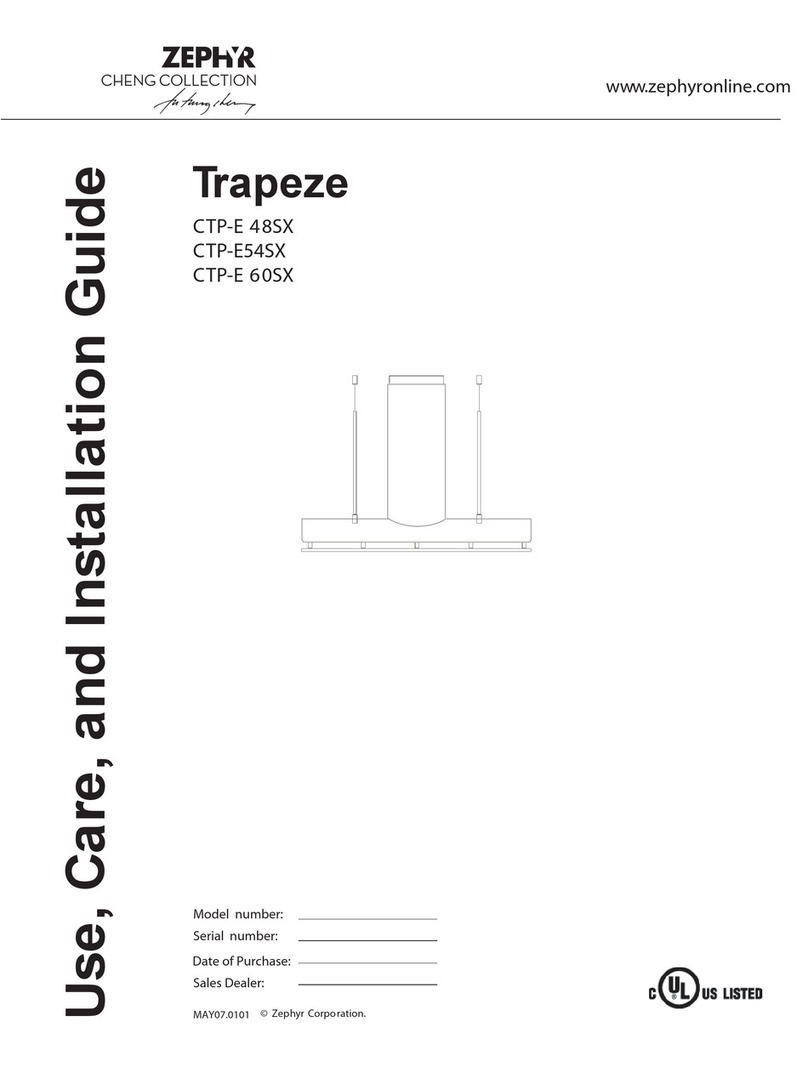
Zephyr
Zephyr Trapeze CTP-E 48SX Use and installation guide

Gemini
Gemini GCH70S Instruction manual and installation instructions

ELICA
ELICA Shire Instruction on mounting and use
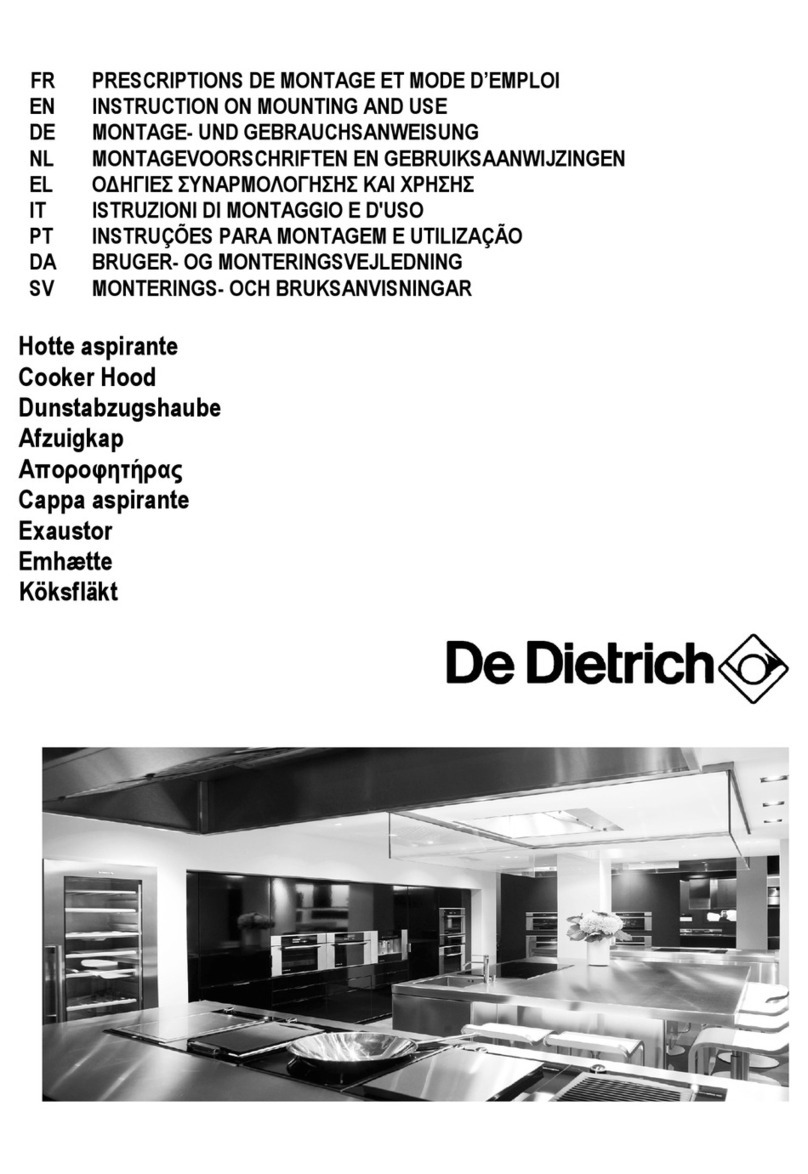
DeDietrich
DeDietrich PLATINUM DHT7156X Instruction on mounting and use

AIRFORCE
AIRFORCE F177 60 Instruction on mounting and use

Küppersbusch
Küppersbusch IKD 12850.0 Instruction on mounting and use
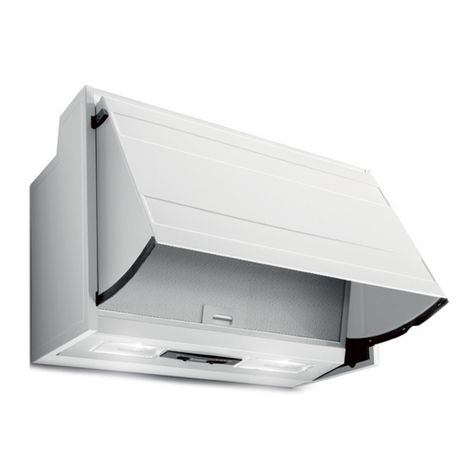
Hoover
Hoover HBP612/3 N Instruction on mounting and use

AIRFORCE
AIRFORCE F164 45 TLC Instruction on mounting and use

Novy
Novy 7800 installation instructions
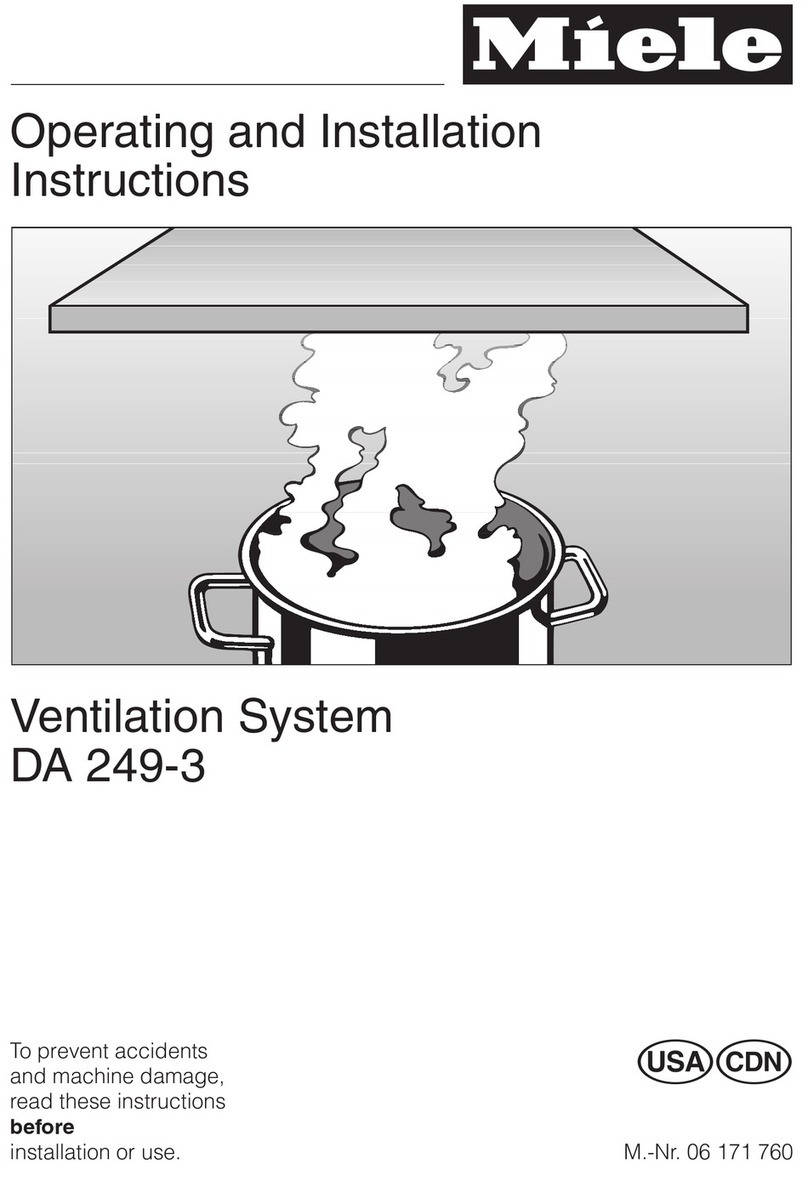
Miele
Miele DA 249-3 Operating and installation instructions
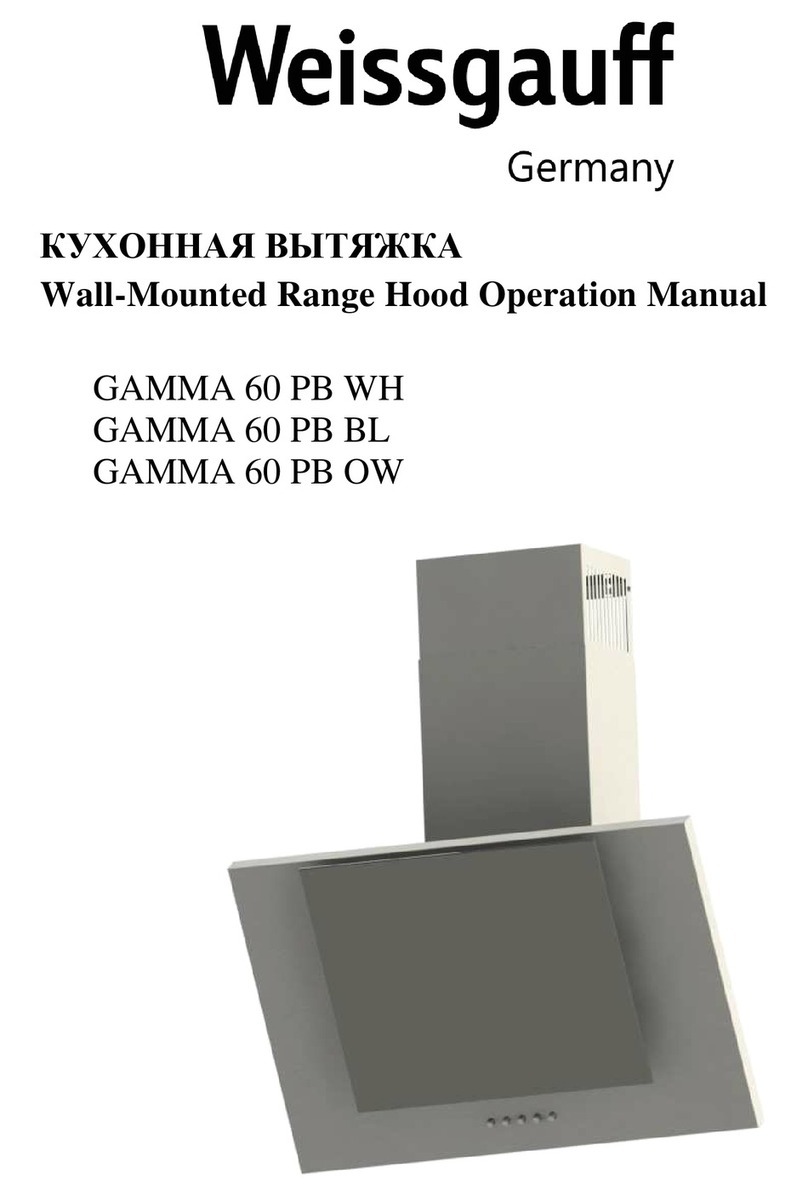
Weissgauff
Weissgauff GAMMA 60 PB WH Operation manual
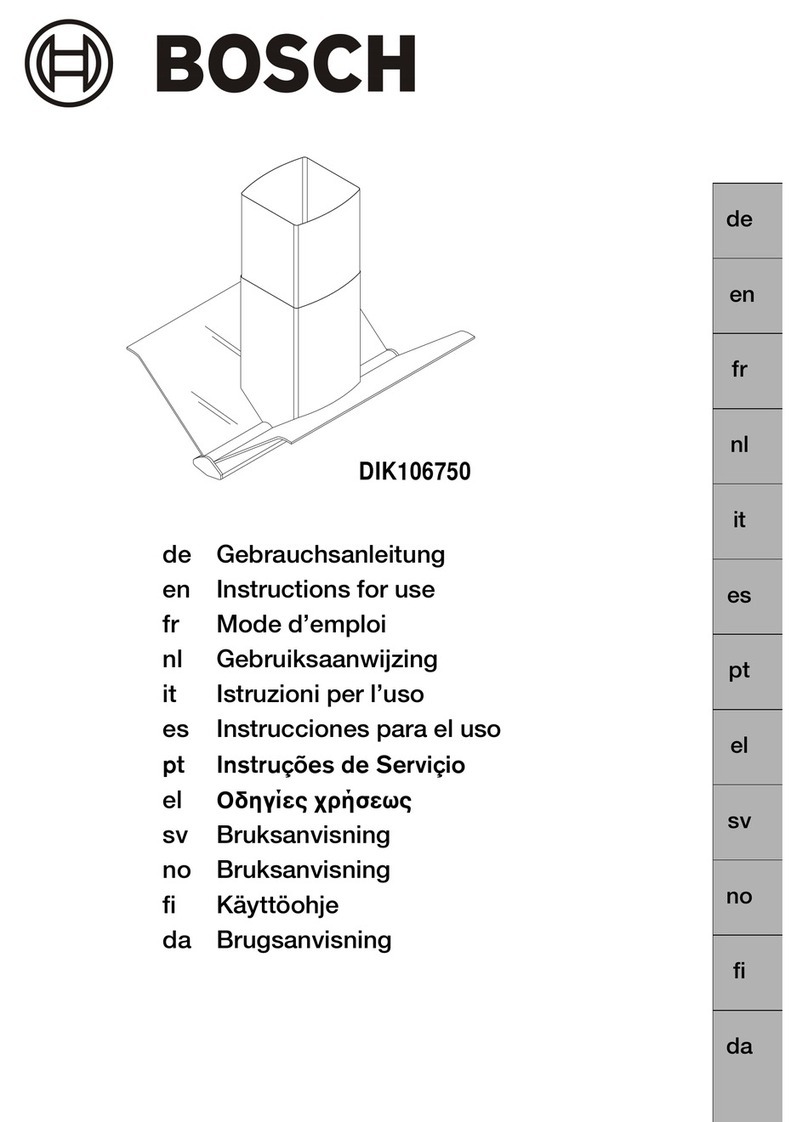
Bosch
Bosch DIK106750 Instructions for use
